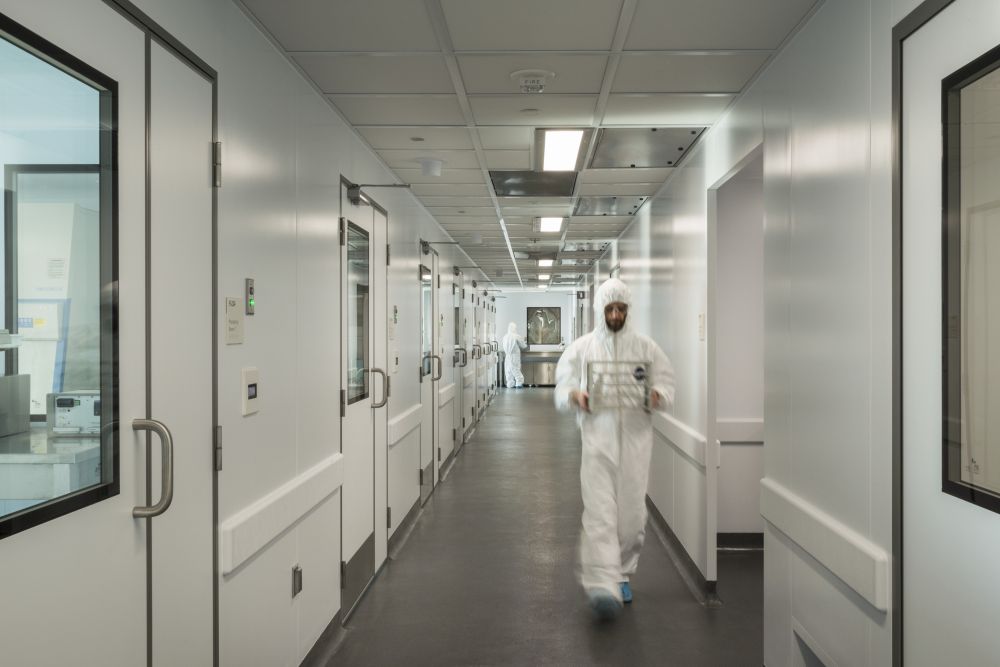Let’s stop creating cancer hospitals with cancer-causing materials
It’s crazy when you think about it—we as a society consider it both normal and acceptable to build new cancer centers using materials full of known carcinogens.
It makes no sense. It undermines the incredible effort, dedication and life-saving work the researchers, staff and executives at these hospitals and health systems dedicate themselves to each day. Ironically, it positions the facility as an adversary to care.
Furthermore, creating cancer care centers with known carcinogens is completely unnecessary. We have every tool needed to design vibrant, healthful spaces without carcinogens, starting now.
So how do we start creating cancer care centers free of carcinogens in 2022 and beyond? We use the existing tools available.
Step 1: Know your enemy
Identify the harmful toxins you don’t want anywhere near your cancer center. Starting with the Six Classes and Red List from the International Living Future Institute is a great place to build such a list.
Step 2: Rethink the main culprits
In healthcare, over 75 percent of interior carcinogens are found in five common materials: wallcoverings, paints, solvents, carpeting and vinyl flooring. Bring laser focus to material decisions for these materials.
Step 3: Embrace transparency
Resources like mindful MATERIALS help organizations specify materials for every type of space through Environmental Product Declarations (EPDs).
These EPDs empower teams with transparent tools and objectives that communicate exactly what products are made of and how they impact the environment across their entire life cycle. Verified EPDs can earn project credits for LEED, WELL and other building systems. Moreover, they can help us kick carcinogens out of cancer care buildings completely.
Step 4: Design to outcomes, not material
Once we’ve built our list of carcinogen-free products, we can’t lose sight of the need to design wonderful spaces that meet the same performance outcomes. Eradicating carcinogens is a wonderful step, but be sure to design for specific benefits for the staff and occupants of these buildings. Design targeting specific health or performance outcomes, such as boosting the patient immune response, or student testing performance, provides a clear indicator of success for everyone.
We need to hold healthy materials to the same standards, as the same positive outcomes are absolutely achievable. And, to do that, we as designers need to take deeper interest in the content of the products we specify. If we can amplify our awareness, we can nourish the entire process and more rapidly achieve our desired outcomes.
Step 5: Evaluate the full payback picture
There’s no denying it, carcinogen-free materials may increase initial capital cost for cancer centers. But, that’s no reason to let them in our buildings and misses the bigger picture. In fact, when a health system considers the full Life Cycle Cost Analysis (LCCA), it’s almost always shown that using healthy materials will generate more value over the duration of a building’s life. LCCAs can help make this clear.
And, that’s really it. We can and must create a world with carcinogen-free cancer care centers for our collective public health, we just need to use readily available tools and stay committed. It’s an exciting prospect. Healthier buildings mean better patient outcomes, happier and healthy staff, better patient experiences and so much more.
So let’s do this. Let’s commit to knocking carcinogens out of all future cancer buildings. And, let’s inspire the rest of society to match the effort—there’s really no reason for carcinogens to be in our workplaces, schools, homes or anywhere in between if we want them out.
A built environment without cancer-causing materials—it’s really not that crazy at all.


